2024 wrapped: The biggest transport stories of the year, and what’s next
Sign up now: Get ST's newsletters delivered to your inbox
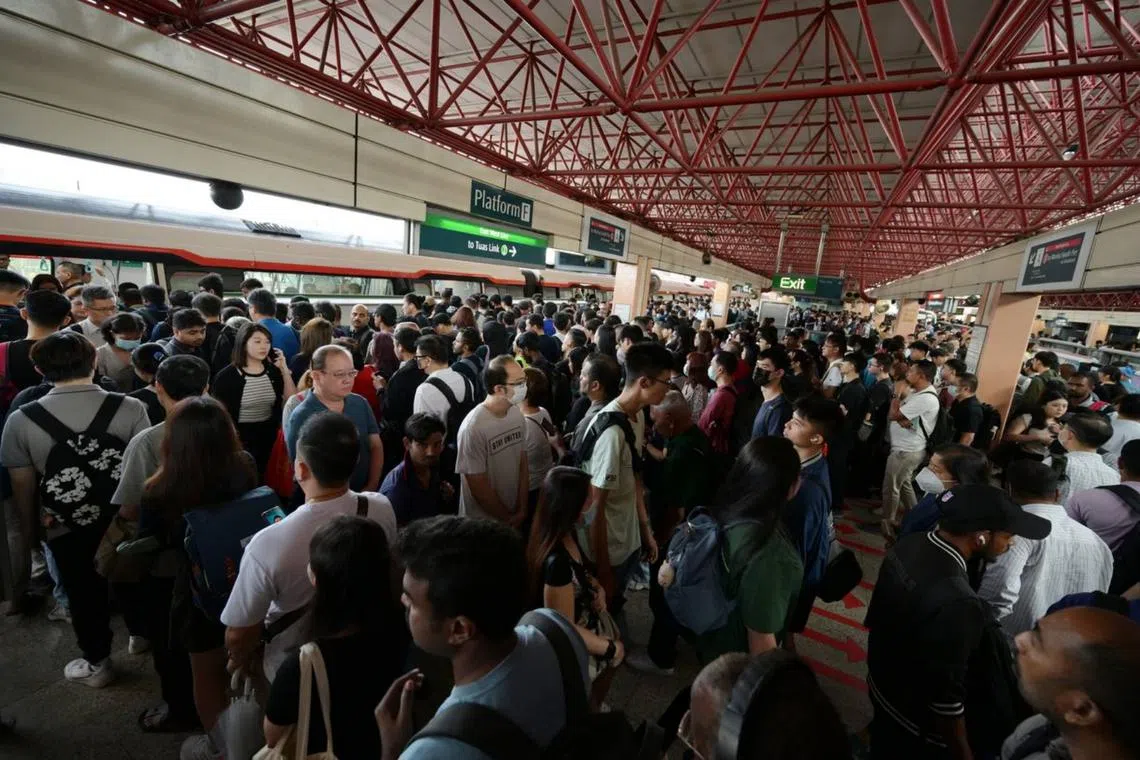
Commuters waiting at Jurong East MRT station for the shuttle train to Boon Lay on Sept 30, during the East-West Line breakdown.
PHOTO: ST FILE
Follow topic:
SINGAPORE – From extreme flight turbulence resulting in the death of a traveller to a six-day MRT breakdown affecting millions of passengers, the transport sector in Singapore has had a rough 2024.
Transport Minister Chee Hong Tat said as much in an interview to round up his first full year on the job, which he described as challenging for all involved
Here are five of the biggest transport developments in 2024, and what can be expected in 2025.
1. SimplyGo saga
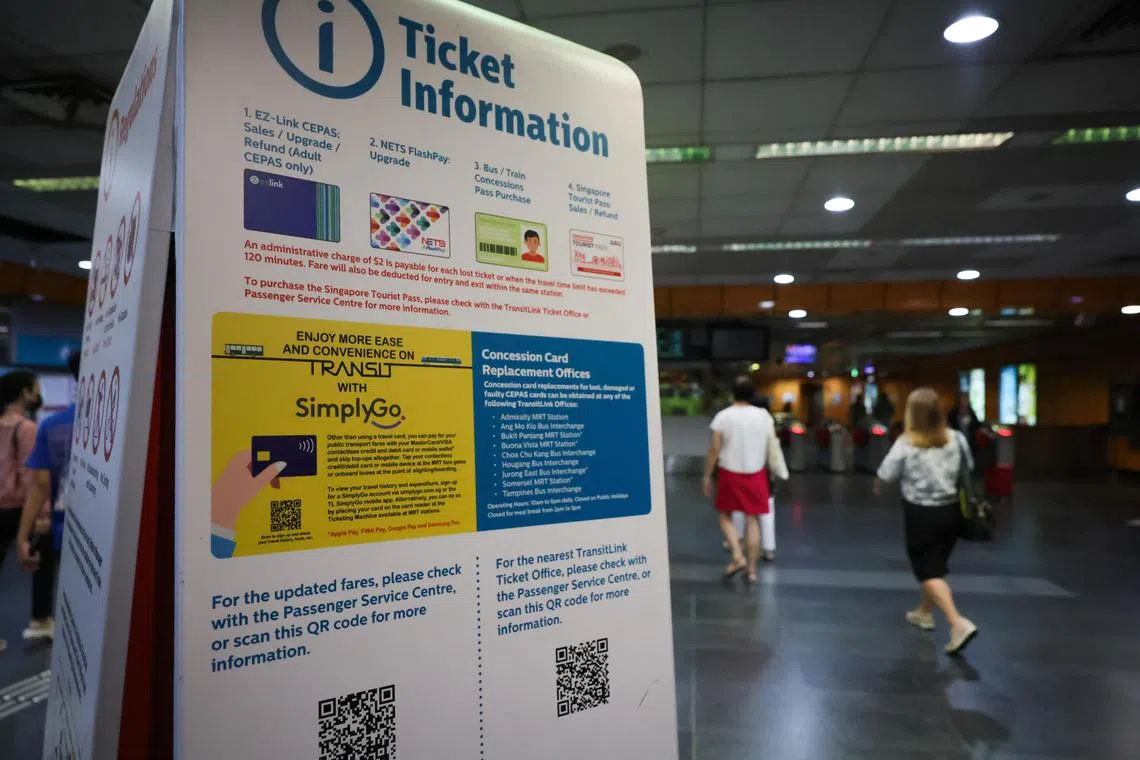
Information on ez-link cards, SimplyGo, concession passes and tourist passes at Newton MRT station.
ST PHOTO: GIN TAY
The year 2024 began in controversy after public transport users baulked at a move in January to phase out the use of older transit cards by June. The plan was shelved two weeks later
The authorities had underestimated the desire among some passengers to see their fare transactions and card balances at fare gates and on bus card readers – something that is not technically possible
The Land Transport Authority (LTA) has since been given the task of finding ways around this technical limitation, and of improving the features and user experience of the newer payment system.
2. Flight SQ321
Tragedy struck in May when a Singapore Airlines (SIA) flight from London to Singapore encountered severe turbulence over Myanmar, leading to a 73-year-old passenger dying of a suspected heart attack and dozens more being hurt.
Those aboard Flight SQ321 on May 21 described a harrowing experience as the Boeing 777-300ER plane was thrust upwards and downwards, likely owing to rapid changes in gravitational force
Passengers not strapped in were reportedly flung against the cabin ceiling, leaving many with serious injuries involving the spinal cord, brain and skull.
Investigations are under way to uncover the full facts of the incident, which drew global attention to the safety risks posed by turbulence. SIA also faces a lengthy legal process to determine how much it needs to pay out to passengers in compensation.
3. Oil spills
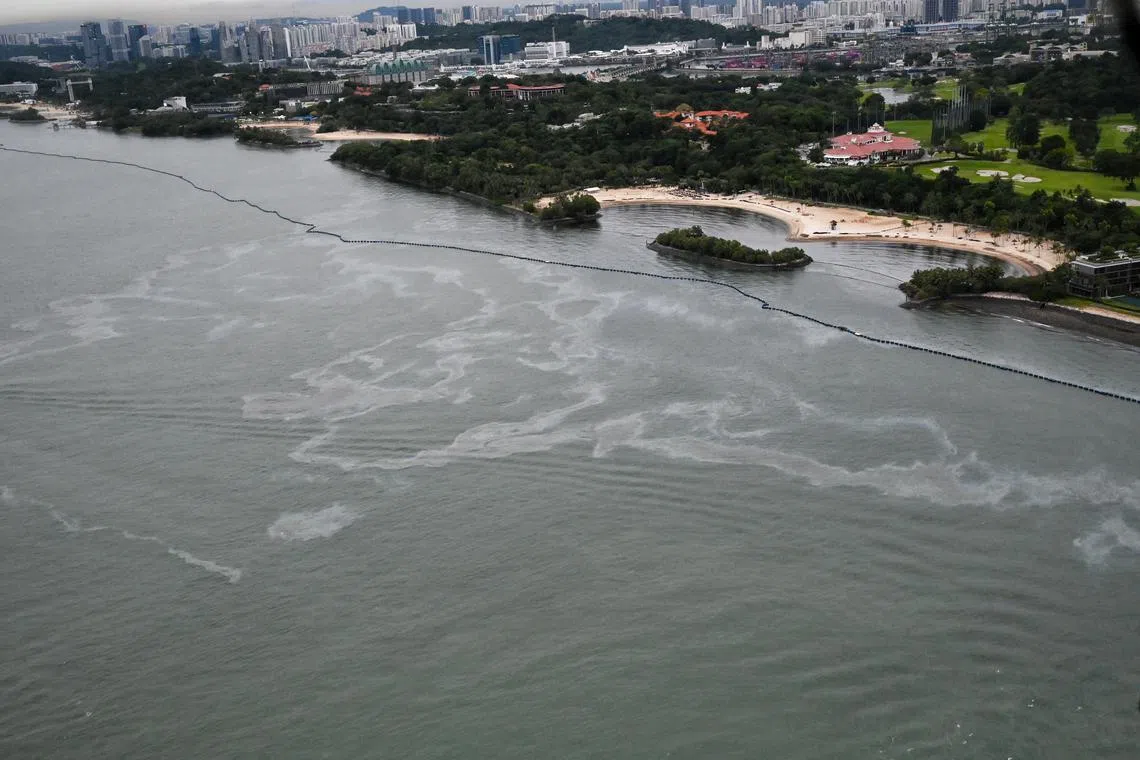
An oil spill being contained with curtain booms off the beach of Sentosa on June 22.
ST PHOTO: KUA CHEE SIONG
On June 15, Singapore awoke to a sea of black
Carried by tidal currents, oil slicks quickly spread to Labrador Nature Reserve, Sentosa, East Coast Park, the Southern Islands, and even to the Johor coastline in Kota Tinggi, in what was the worst oil spill here in a decade.
Water activities at affected beaches were suspended for more than two months, and more than 1,000 workers were activated for the clean-up.
Since then, four crew members on the Netherlands-flagged dredger on June 14 have been charged with failing to perform their duties properly
In October, two other oil spills occurred within days of each other, albeit on a smaller scale.
The more serious of the two incidents saw about 30 to 40 tonnes of oil and water leak from a pipeline of British petrochemical company Shell, with the clean-up lasting nine days.
4. East-West Line breakdown
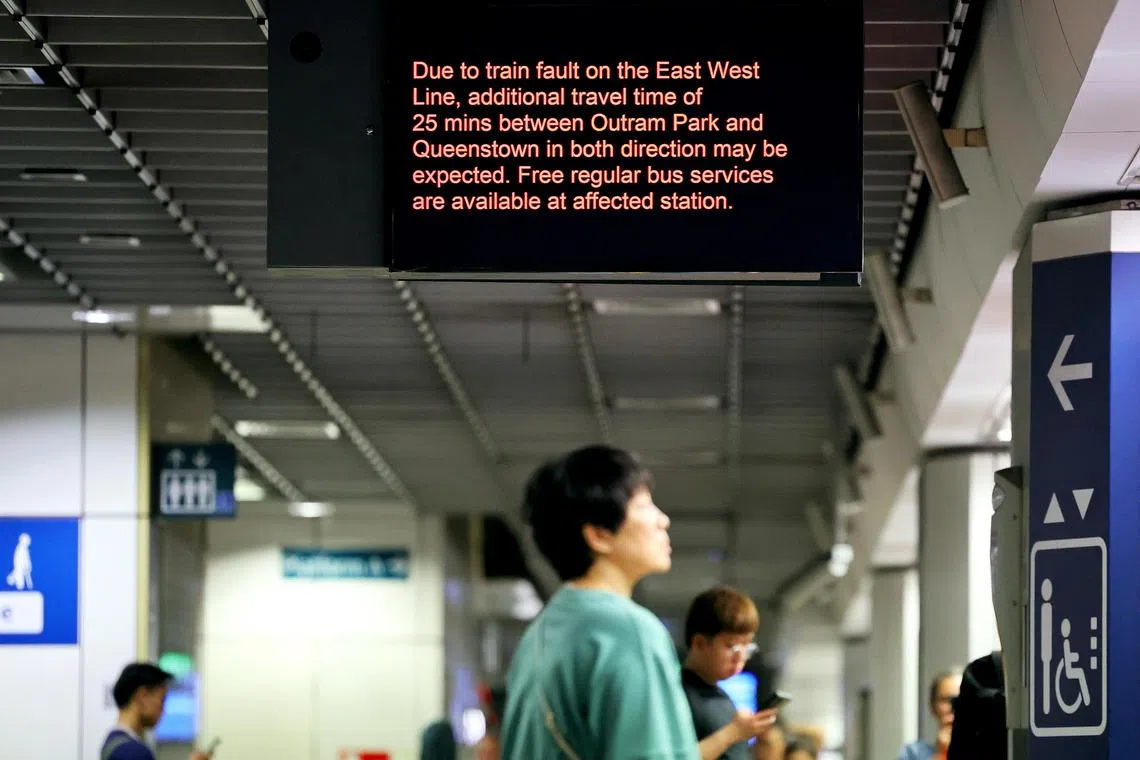
A train service announcement at Chinatown MRT station at about 1pm on Oct 10.
ST PHOTO: KELVIN CHNG
Also under scrutiny in 2024 was the reliability of the rail network, as a number of lengthy disruptions hit MRT and LRT lines here.
The worst of the lot was the East-West Line breakdown that crippled train services between Jurong East and Buona Vista stations for six days between Sept 25 and 30, affecting about 2.6 million passengers.
More than 800 workers were needed to get train services up and running again, with another 600 people on the ground to guide passengers and manage crowding.
LTA is in the midst of investigating the disruption,
Singapore’s Transport Safety Investigation Bureau is also carrying out an independent probe.
5. MRT and bus improvements

Prime Minister Lawrence Wong (centre) and Deputy Prime Minister Heng Swee Keat (left) at Siglap station, one of seven new stations in the fourth stage of the Thomson-East Coast Line, on June 21.
ST FILE PHOTO
In an otherwise cloudy 2024, there were bright spots.
The fourth stage of the Thomson-East Coast Line (TEL4), which opened to much fanfare in June
Spanning 10.8km, the new stretch of seven MRT stations from Tanjong Rhu to Bayshore is part of Singapore’s efforts to grow the rail network to about 360km by the 2030s.
The opening of TEL4 led to an increase in the weekly average ridership of the line from 200,000 in May to more than 250,000 in October. Traffic speeds along Marine Parade Road have also improved by 15 per cent during peak hours, Mr Chee said in November.
Meanwhile, the authorities announced in July that up to $900 million will be spent over eight years
New bus routes – including a first-of-its-kind “express feeder” service – have also been rolled out in Punggol, Tengah, Tampines and Yishun.
More new services will be launched
Looking ahead
1. New diesel car and taxi ban
The new year will mark the start of a ban on the registration of new diesel cars and taxis,
While owners of diesel cars registered before Jan 1, 2025, will be able to renew their certificates of entitlement (COEs), they will be subjected to higher road taxes because of an existing policy that imposes a surcharge of 10 per cent to 50 per cent on vehicles that are more than 10 years old.
The move to phase out the more pollutive vehicles, announced in 2021, is a precursor to an upcoming requirement in 2030 for all new cars and taxis registered here to be cleaner-energy models.
2. Government reviews
In 2025, the Government will wrap up two ongoing reviews that could have a major impact on taxi and ride-hailing services – known collectively as the point-to-point transport sector – as well as public buses.
The review of the point-to-point transport sector, which kicked off in September 2023, has already led to a set of new regulatory changes
LTA is looking at how it can encourage drivers entering the sector to opt for taxis, and studying safeguards to prevent large operators from locking in passengers and drivers to their platforms. An update will be given in March 2025.
Separately, a task force set up in July to look into bus safety after a spate of accidents is expected to complete its work by the first half of 2025. Areas being looked at include safety protocols, work conditions, the design of road infrastructure and the use of technology.
3. Start of work on Changi Airport T5
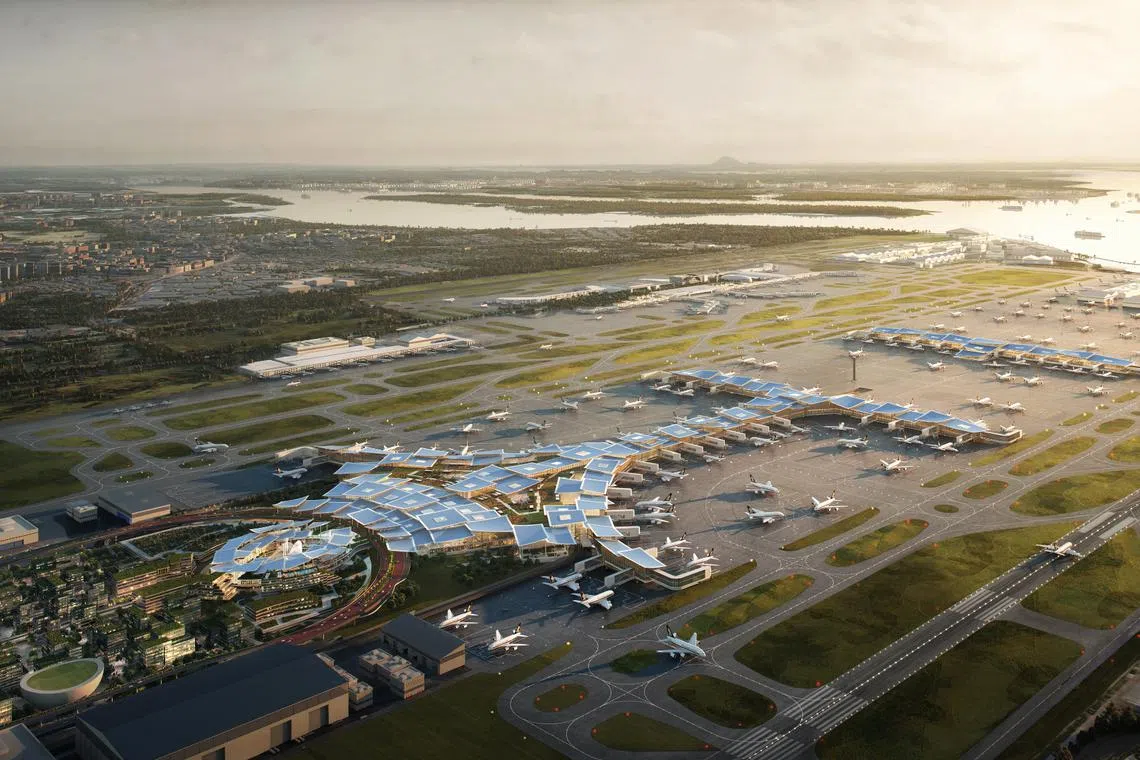
Changi Airport Terminal 5 will be able to handle up to 50 million passengers a year, on top of the airport’s current capacity of 90 million.
PHOTO: CHANGI AIRPORT GROUP
In the first half of 2025, construction of Changi Airport Terminal 5 (T5)
During the hiatus, the mega terminal’s design was refined to make it more pandemic-resilient.
Expected to be operational by the mid-2030s, T5 will be able to handle up to 50 million passengers a year, on top of Changi Airport’s existing capacity of 90 million.
In the meantime, Changi Airport Group will invest $3 billion over the next six years
The operator said this will help it to meet rising demand for air travel in the interim, though it also means higher fees for passengers and airlines.
4. Pedestrian safety
Tighter rules around the use of personal mobility aids will take effect by the end of 2025, amid increasing public concern over the misuse of such devices by able-bodied people.
These stricter rules include a lower speed limit of 6kmh, down from 10kmh; restrictions on the size of the devices; and a new requirement for their use to be confined to those certified to have walking difficulties or relevant medical needs.
Changes to the law will need to be made, and specific implementation details have yet to be announced, with the Transport Ministry telling mobility scooter users not to approach healthcare professionals to obtain certification just yet.
To improve safety on public paths, LTA has also said it will turn footpaths situated next to more than 200km of dedicated cycling lanes into pedestrian-only paths
Bicycles and non-motorised personal mobility devices, such as kick scooters, will be banned from these pedestrian-only paths.
Enforcement will start on July 1, 2025.
5. First injection of extra COEs
From February 2025, car buyers and dealers can expect the first injection of up to 20,000 COEs across the five vehicle categories, as part of continued efforts by the Government to reduce COE supply volatility.
The move to increase Singapore’s vehicle population by up to 2 per cent of current levels was enabled by a reduction in the total mileage clocked by vehicles between 2019 and 2023, and more traffic congestion management tools with the roll-out of the new satellite-based Electronic Road Pricing system.
While the added supply could moderate high COE prices
Kok Yufeng is a transport correspondent at The Straits Times.


